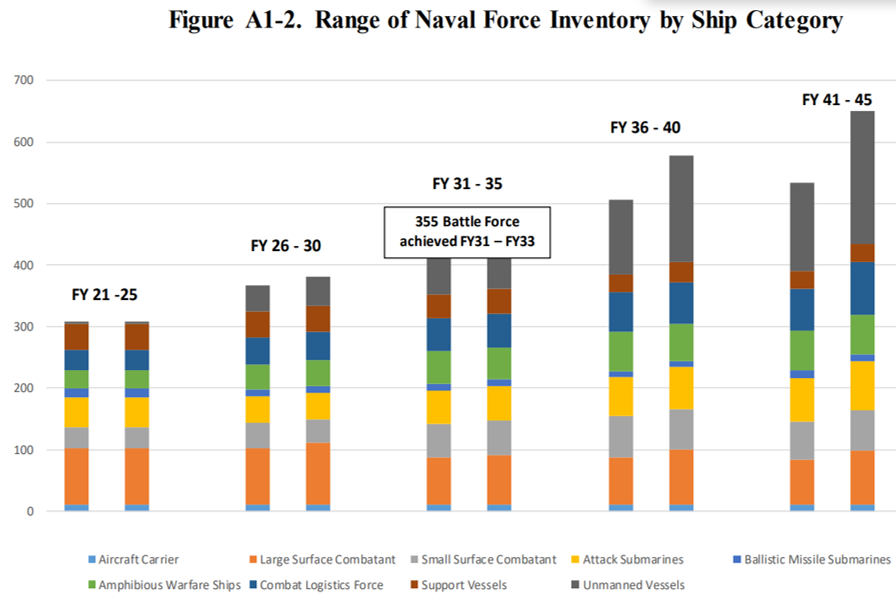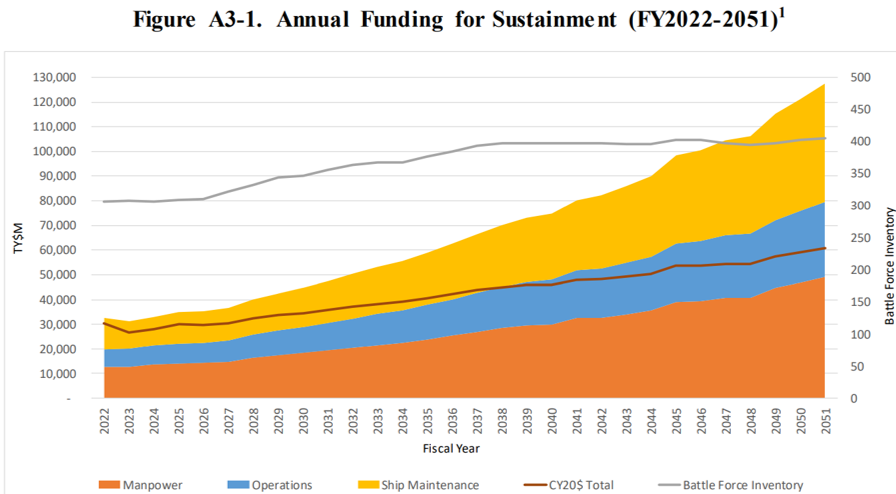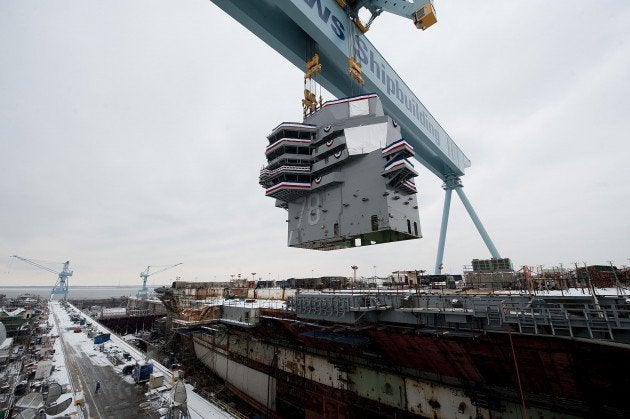US Navy Presents Plan to Field Over 400 Manned Vessels by 2045
On 10th December, the US Navy unveiled a new report to Congress on “Annual Long-Range Plan for Construction of Naval Vessels”. The plan envisions a long-term reduction in the supercarrier force to only 10 and a decrease in large surface combatants, even if numbers may temporarily rise in the 2020s. All SSGNs (cruise missile-armed submarines, these include the first four Ohio-class boats) are set to retire in the mid-2020s. Instead, the largest focus is to be on small surface combatants, attack submarines, amphibious warfare ships and combat logistics vessels. The numbers of vessels in these four categories is expected to more or less double by the end of the 2040s. The plan sees the USN reaching a strength of over 355 ships in the early 2030s and over 400 after 2045.


Asides from manned combat vessels, a significant increase in the unmanned vehicle arsenal is also planned. By 2045, the US Navy plans to field 143 unmanned surface and subsurface platforms. These were described as:
- Large Unmanned Surface Vessels (LUSVs) add substantial, distributed, offensive and defensive fires capacity to the fleet at an affordable cost. LUSVs are initially envisioned to operate as adjunct fires magazines with larger manned multimission platforms to minimize technical risk and maximize survivability
- Medium Unmanned Surface Vessels (MUSVs) show promise as low-cost forward sensors and C2 nodes.
- Extra Large Unmanned Undersea Vehicles (XLUUVs), a modular design UUV, will have the capability to deliver multiple payloads at extended ranges.
Funding did not escape the minds of the planners who extensively detailed how they see changes in the cost of annual shipbuilding and ship maintenance. As the battle force expands, costs for sustainment are expected to rise substantially. The Navy report expects the cost of sustainment to quadruple by the 2050s although it must be noted that future costs listed in the report have been forward inflated in accordance to economic projections. Thus, the actual rise in costs is not nearly as large as it may first seem, as with the Department of Defense’s assumed 4.6% annual inflation rate, one dollar today will be worth $4.03 in 2051.

While the report is primarily technical, the plans to significantly increase naval procurement highlight the increasing focus Washington places on great power competition in the Indo-Pacific. Read the full report at here.

